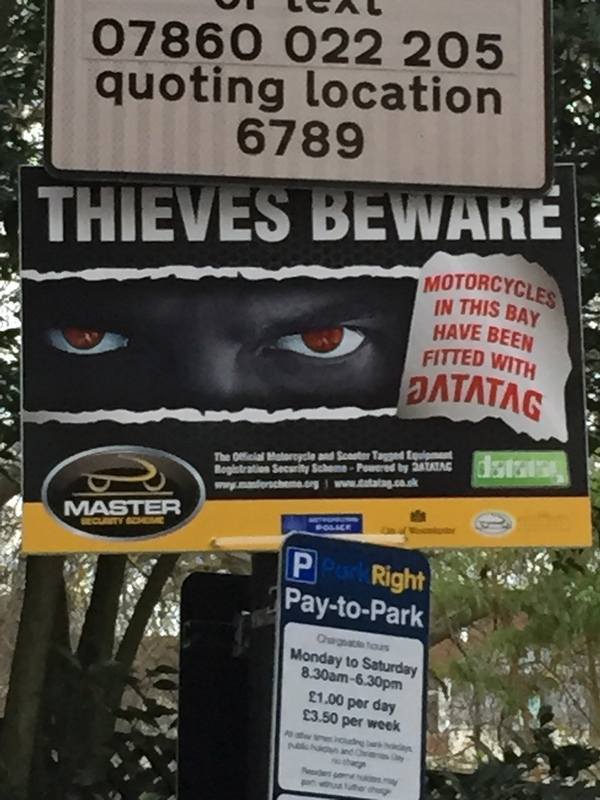The Motorcycle Industry Association and Association of Chief Police Officers are launching a landmark policy document today, to encourage greater use of motorcycles on UK roads, which should improve road safety as a result.
Realising the Motorcycling Opportunity; A motorcycle safety and transport policy framework was jointly devised by police and industry, in response to the slowdown of reductions in rider casualties.
Though rider safety has improved considerably since 2000, motorcyclists are currently over represented in road fatality statistics (1% of traffic, 19% of fatalities). This could be reduced with government support.
Both police and industry agree traditional road safety policies directed at motorcycling will only partially deliver more positive outcomes for motorcycle safety beyond those already achieved. However, encouraging rather than discouraging motorcycling, should contribute to better safety outcomes.
The document, which will be unveiled at a Parliamentary Reception hosted by the All Party Parliamentary Motorcycle Group on Monday 8th December, calls for motorcycles to be included in mainstream transport policy and sets out a framework of practical recommendations addressing how this might be achieved.
Why should government and transport planners take note?
Two-wheeled transport offers an antidote to congestion. Motorised two-wheeled transport is particularly effective at keeping traffic moving. A Belgian study*, which modelled a shift from cars to motorcycles on one of the most congested roads in Europe, found that when just 10% of car drivers swapped to a powered two wheeler, then congestion was reduced for all road users by 40%. When 25% of drivers swapped, congestion was eliminated altogether.
Over the coming years, it is likely increasing numbers of people will opt for two-wheeled vehicles, whether bicycles, fully motorised two-wheelers, or a cross between the two. It is also likely some cyclists will migrate to motorised forms of two-wheeled transport and vice-versa. The Government has an opportunity to tackle safety issues faced by all vulnerable road users in an integrated and therefore more cost effective way.
Why encourage motorcycle use?
The idea that more motorcycles on the road improves rider safety was initially based on European data, which shows that when a greater percentage of traffic is made up of motorcycles, mopeds or scooters, riders are less likely to be involved in an accident.
With around 50 per cent** of motorcycle accidents initiated by other road users, an effective programme to raise awareness of all road users could considerably reduce the number and seriousness of incidents.
There is a growing body of evidence which shows that if more people started their road careers on a motorcycle, scooter or moped, this would lead to improvements in driver behaviour towards all vulnerable road users. It is also acknowledged that motorcyclists make better road users when driving cars.
The friends and relatives of motorcyclists are also more aware of vulnerable road users – a psychological factor, which forms the basis of successful road safety initiatives.
Some of the measures called for in the paper include:
Education for all road users
One theory test for all road users (motorcyclists have to do a different one to drivers)
Compulsory road user awareness lessons within the school curriculum
A culture of post-test training for all vehicle modes
Perception
· More comprehensive breakdown of motorcycle accident statistics
· Encourage a ‘two-wheel paradigm’ to embrace all two-wheeled transport and stop excluding motorcycles
· Include motorcycle use as core part of overall transport policy, along with walking, cycling and public transport.
Incentives
Grants for electric vehicles to include electric motorcycles not just electric cars (cars won’t help reduce congestion)
Training and safety
Continue progress made in setting new standards in motorcycle training through the Motorcycle Industry Accreditation Centre (MCIAC)
Training upgrade for those who hold a licence for a smaller bike, but want to upgrade to a larger one.
Develop coherent and appropriate clothing and equipment standards
Promote the use of Motorcycle Guidelines, recently updated by the Institute of Highways Engineers
· Nationwide utilisation of the BikeSafe voluntary assessment programme
· Greater use of the RIDE scheme (a course for motorcyclists displaying anti-social behaviour)
Quotes
Deputy Chief Constable Tim Madgwick, Motorcycling Lead for the Association of Chief Police Officers (ACPO) explains why they have joined forces with the MCIA: “Over recent years, the number of motorcycle casualties has reduced which is encouraging. However, this reduction seems to be slowing, with the emphasis moving away from progress in safety and too many motorcyclists are still being killed and injured on the roads. After taking over as the ACPO Motorcycling Lead, I wanted to ensure that casualty reduction was still a priority and I am pleased that these views were shared by MCIA and that we have been able to work together to build this framework which should see some real advancement in improving road safety, particularly for motorcyclists.
“Through this joint work, we hope to make some sustained changes to see improvements for motorcycle safety and a greater recognition of the wider impacts of increased powered two-wheeler use. The framework places education at the heart of it with some proposed transformations to improve the theory test and greater recognition and use of BikeSafe and the RIDE scheme. These are changes that I hope to see make some really positive steps towards reducing the numbers of casualties on our roads.”
Steve Kenward, CEO of the Motorcycle Industry Association (MCIA) is clear that inclusion in transport policy is the only way forward to improve safety: “For too long, the Government, local authorities and transport planners seem to have deliberately avoided talking about motorcycle use, a practice which will increasingly fail as a method of reducing rider accidents. Motorcycles need to be treated as a legitimate form of transport, which can save time, space and money for commuters, whilst having the added benefit of reducing congestion for all road users.”
Steve Baker MP, Chairman of the All Party Parliamentary Motorcycle Group, which is hosting the Parliamentary Reception, gave a personal view of why motorcycles should be encouraged: “It’s time for officialdom to stop seeing motorcycling as a problem. Increased motorcycle use offers affordable access to personal transport and an antidote to congestion. As a lifelong motorcyclist myself, I have first-hand experience of the benefits that commuting by motorcycle can bring. I would be delighted to see the Government adopt a more encouraging approach to motorcycle use.
“If we want to reduce congestion and improve the quality of people’s lives, we need to embrace all forms of two-wheeled transport. This document gives a clear framework as to how that can be achieved while improving safety for all road users.”
The MCIA represents around 90% of the supply side of the UK motorcycle industry. Members include manufacturers and importers of motorcycles, clothing and accessories, as well as insurers, finance providers and road safety partners.
· BikeSafe is a workshop offered by many police forces, which helps riders appraise their own riding and directs them towards post test training.
· * Study was commissioned by the Belgian Automobile Federation, Febiac, and conducted by research company - Transport and Mobility Leuven. Report title: Commuting by Motorcycle; Impact analysis of an increased share of motorcycles in commuting traffic (September 2011)
· **Figures supplied by insurance aggregate based on over 65,000 quotes.




 The Square was identified as one of four ‘hotspots’ for motorcycle theft by Westminster City Council, with around 52 motorcycles or scooters stolen each year from its parking bays - around one a week.
The Square was identified as one of four ‘hotspots’ for motorcycle theft by Westminster City Council, with around 52 motorcycles or scooters stolen each year from its parking bays - around one a week.